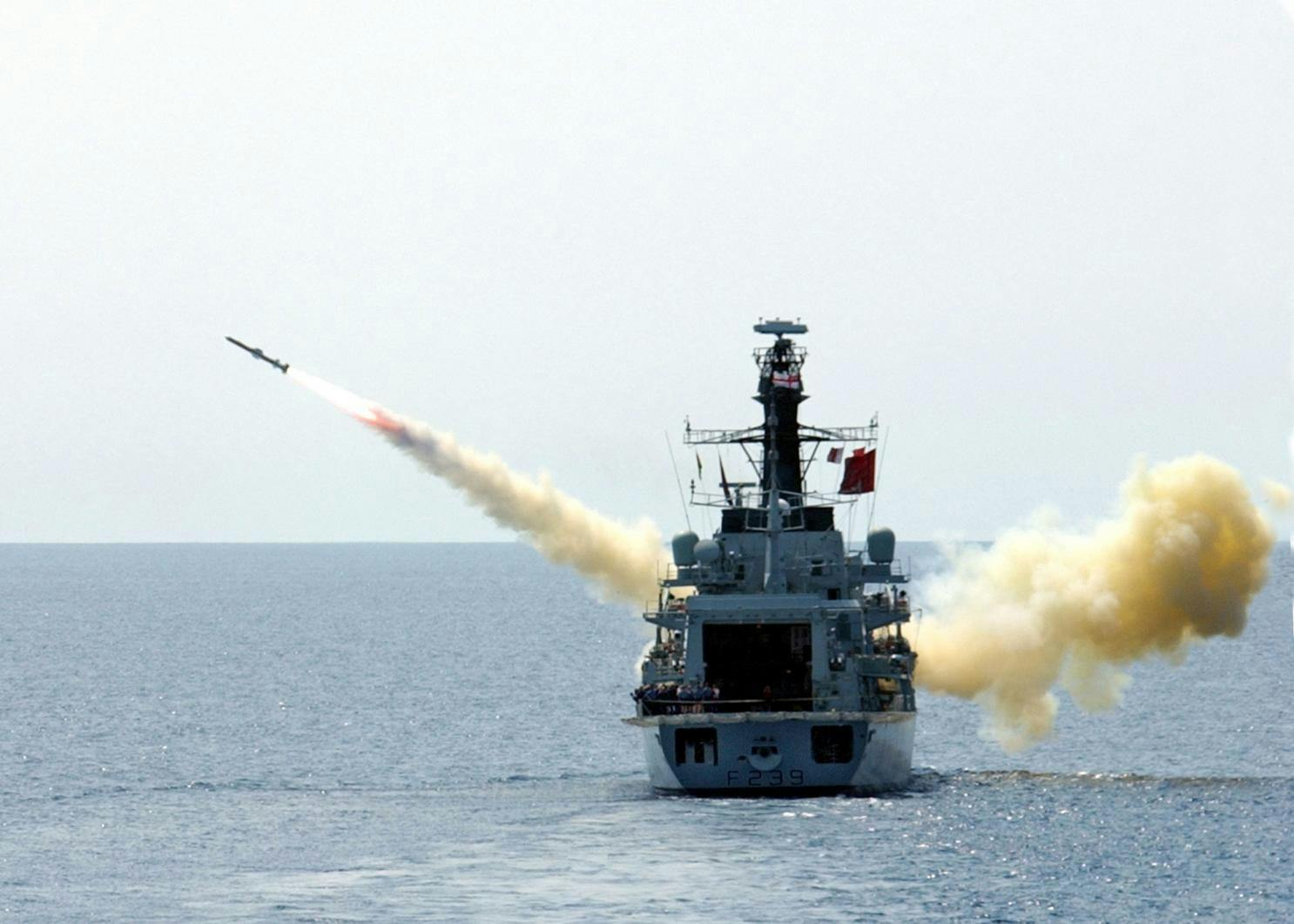The new interim missile will fill the gap between the retirement of Harpoon and its replacement which isn’t due until ‘around 2030’.
When Harpoon exits service in 2023 there will be a serious capability gap until the potential entry into service of FC/ASW programme in 2030 if this does not happen, warned a report published by the Defence Committee last year.During a Defence committee session Lt General Sir Mark Poffley, Deputy Chief of the Defence Staff, made clear that the MoD wanted a surface to surface anti-ship missile to fill the capability gap. However, he conceded that there was not a funded line in the equipment plan for such a purchase and that it was therefore one of the MoD’s “aspirations” for the Modernising Defence Programme.
The report advised:
“Alongside the work being undertaken by the FC/ASW concept phase, the MoD should conduct a careful analysis of the various options for filling the capability gap. This analysis should include a technical assessment of: the potential for Harpoon’s lifespan to be extended; whether other existing capabilities could be augmented to provide a stronger anti-ship function; the various off-the-shelf options that exist, including the procurement of Harpoon Block II for the P8 Maritime Patrol Aircraft; and the potential procurement of Exocet as a surface-to-surface capability for the Royal Navy.”
The possible off-the-shelf alternatives that could be considered by the MoD include the following:
Lockheed Martin’s Long-Range Anti-Ship Missile (LRASM)
The LRASM comes with both air and vertical canister launch capabilities, relies on onboard systems for target acquisition without the need for GPS navigation or external data-feeds and is able to defeat jamming and detection measures. It offers interoperability with the F-35. The LRASM will enter service for the US Air Force this year and the US Navy next year. Australia, the UK and Canada are reported to have expressed interest in the missile. Cost per unit is in the realm of $700,000–1,000,000.Naval Strike Missile (NSM)
The multi-role variant of this missile, jointly developed by Kongsberg and Raytheon, would be compatible with the F-35 and would offer lower costs than the LRASM or the latest Harpoon variant. According to Raytheon, the NSM is “proven, affordable—and available today. The Naval Strike Missile is a long-range, precision strike weapon that can find and destroy enemy ships at distances up to 100 nautical miles away”. The NSM’s lifespan extends until 2040.53RBS15 Mk3
Produced by Saab, the RBS15 Mk3 is, according to Naval Technology, “packed with a range of high-end features, including sophisticated electronic counter-measures (ECM) and an advanced graphical user interface [ … ] it carries a heavy, high-explosive blast and pre-fragmented warhead over a range of around 134 nautical miles and at a speed of 0.9 mach”.The MoD could also seek to procure the Block II+ variant of Harpoon. The US Navy is due to introduce the Block II+ and it “offers greater reliability and survivability” than previous variants, including new GPS guidance and a new data link that offers in-flight updates, as well as improved target selectivity and “enhanced resistance to electronic countermeasures”.
Jane’s reported a while back that senior sources informed them that the current missiles would remain in service at least until 2020. According to the publication:
“There is work ongoing to look at options for longer extension in service.”
When will this replacement be ready?
New Royal Navy surface-to-surface missile ‘by mid-2021’
The missile will ‘deter and defeat enemy warships’.
 UK Defence Journal
UK Defence JournalJeremy Quin, Minister of State for the Ministry of Defence, recently stated:
“The Royal Navy has set the requirements for a Surface-to-Surface Guided Weapon (SSGW) to ensure they maintain the ability to deter and defeat enemy warships. A competition is now taking place and on current plans, subject to funding, we expect bids to provide a solution to SSGW, by mid-2021.”

Britain's new ship-to-ship missile
The new interim missile will fill the gap between the retirement of Harpoon and its replacement which isn't due until 'around 2030'.
 ukdefencejournal.org.uk
ukdefencejournal.org.uk



